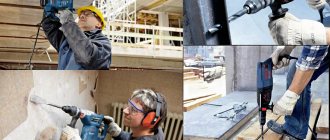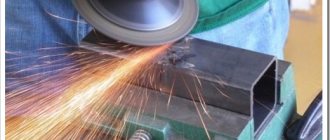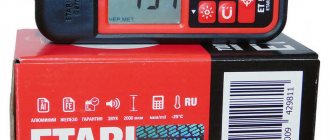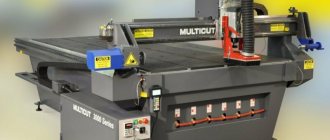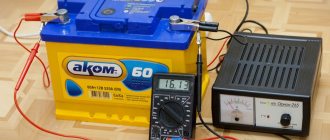- Excellent work quality
- Save time
- Reduced paint consumption
Spray guns are used everywhere - from construction sites and furniture workshops to car services. Each task requires a certain type of tool, and the main thing here is not to miscalculate. How to choose a pneumatic spray gun and not make a mistake? Let's look at this issue in detail.
To be fair, we note that in addition to pneumatic ones (“powered” by air from compressors), there are also electrical devices (powered by the network). However, it is pneumatic spray guns that are more popular.
Briefly about pneumatic spray guns - operating principle
Structurally, the tool is quite simple. It consists of a gun-shaped sprayer and a working paint tank. A flexible hose is used to connect to a source of compressed air (compressor).
During operation, air is supplied along with paint, which is blown out of the nozzle, dispersing into tiny particles. The paint flow has a certain shape (torch), which depends on the spraying technology.
Manual mechanical sprayers
If a large amount of work is expected in an area without electricity, then even using a stand-alone spray gun with a spare battery is impractical - it will last for about an hour of continuous operation.
The solution will be manual types of spray guns - they are a metal or plastic cylinder in which there is a mechanical plunger pump, like a car. A pair of hoses come out of the body - one for pumping the spray solution into the internal container, and the second goes directly to the sprayer.
There are also a number of household devices in which the spray composition is simply poured into the cylinder, then it is sealed and air is pumped inside with a pump.
The pump operates in two modes - they are usually switched using ball valves. First, the spray composition is pumped from the outer tank, and then pressure begins to build up in the inner tank. When the pressure reaches the desired value, you can begin work.
For ease of use, such spray guns are equipped with handles up to two meters long, which allows you to paint large areas with a minimum of operator movement.
Airless and air dyeing methods
In manual devices, these coloring methods work slightly differently. With airless spraying, air is pumped into the container, which creates pressure that pushes the spray composition out of the nozzle. At the same time, it is difficult to achieve uniform application of the composition on the surface to be painted, so such devices are most often used for spraying plants with chemicals or for treating surfaces with antiseptics or anti-corrosion compounds.
The air application method works almost the same way, but when spraying, the composition is additionally mixed with air and, together with it, comes out of the nozzle in the form of a torch, which allows the spray composition to be evenly applied.
The best pneumatic spray gun using spray technology
Existing pneumatic spray guns have one of three spray technologies:
- HP (from English high pressure - high pressure)
- HVLP (from the English high volume low pressure - large volume at low pressure)
- LVLP (from the English low volume low pressure - small volume, at low pressure)
These abbreviations are present in the model names.
Now be extremely careful. Each technology has its pros and cons.
HP pneumatic spray guns.
The devices are characterized by high outlet pressure, which can reach up to 1.5 atm. This feature leads to high air consumption. However, the resulting plume is quite wide. It allows you to quickly and evenly apply paint.
Advantages:
- Painting takes little time
- Excellent spray quality
- Uniform colorful torch
Flaws:
- High air consumption - a powerful compressor is required
- High blood pressure requires specific handling skills
- Up to 60% of the paint goes into the “color mist”
- High air pollution requires the use of protective equipment
Pneumatic HVLP spray guns.
The design reduces outlet pressure. This reduces the rate at which paint particles are sprayed and allows for a denser application. Low pressure allows you to keep the gun closer to the surface, which reduces air consumption and pollution.
Advantages:
- Savings – up to 30% of paint is lost.
- Good quality coating
.Flaws:
- High cost relative to HP models
- High air flow - also requires a powerful compressor in tandem
The price of such an instrument is not a barrier to purchase. Paint savings of up to 20% allow the spray gun to quickly pay for itself, making it a better choice for many. Pneumatic Spray Guns LVLP.
The technology is considered the most advanced today. Atomization requires a minimum amount of air inlet. Pneumatic tools of this type are resistant to pressure changes in the compressor. In terms of consumption, LVLP transfers more than 70% of the paint. They are also used close to the surface.
Advantages
- Minimum loss value - up to 20% of paint
- Good quality coating
- Resistant to pressure changes
- Low air consumption
Flaws:
- High price
- Requires work skill
Let's summarize the above.
The HP model is beginner-friendly. A pneumatic spray gun will quickly cover a large surface, but more paint will be wasted and polishing will be required due to dispersion. The quality of the coating does not matter, but is the paint inexpensive? Choose HP with confidence.
The LVLP air spray gun is often chosen by experienced car service technicians due to savings, the possibility of applying paint close up and the absence of the need for polishing, which is not uncommon.
Speaking about HLVP, we note that such pneumatic devices are something between HP and LVLP.
How to choose a compressor for painting
Before deciding which compressor is best for a particular spray gun model, it is worth remembering that the air flow parameters at the outlet of the receiver should be 20-25% higher than the optimal air values at the spray gun inlet fitting. This is due to the fact that the air flow must be driven through flasks with a granular moisture absorber and an oil trap.
For use as a compressor unit for painting work, the modern market offers several types of devices:
- Screw compressors of small and especially small class;
- Piston models;
- Low pressure compressors.
Engine power determines air flow. For a low paint consumption and high air pressure spray gun designed for an air flow of 150 l/min, the power of the electric motor must be at least 1 kW.
In addition to the listed options, monoblock models of paint sprayers are available. For such designs, an external compressor is not needed, since the air injection device is built into the body of the spray gun. Often, such a spray gun without a compressor can operate even in the absence of an electrical network on a built-in battery. Due to the lack of a remote air source, such models of paint sprayers are sometimes mistakenly called electric. Such monoblocks are used for touch-up painting of very small areas of 1-2 dm 2.
Screw and piston compressors
Most models of spray guns are designed and produced to meet the parameters of low-power garage compressor stations with a supply voltage of 220V and an electric motor power of 1-2 kW. The vast majority of household compressors are of a piston design with a piston seal with cast iron and bronze rings and a receiver with a volume of 6 to 50 liters. Piston compressors are widely used in repair work, painting bodies and furniture, for inflating wheels and blowing car parts and components from dust and moisture.
The optimal rotation speed of the crankshaft with a cylinder-piston group is 250-300 rpm, so the drive from the engine to the compressor part is often carried out in the form of a belt drive.
Most often, the mechanical part of such compressors is immersed in an oil bath, so when assembling a painting installation, a dust collector and an oil retention block must be turned on. Dust, water and oil vapors become the main reason for the poor quality of the applied paint layer.
Piston compressors with an oil bath are necessarily equipped with a receiver cylinder; the larger the air capacity, the lower the level of pressure pulsations. Most models are equipped with a controlled valve that automatically starts the engine when the pressure drops below operating pressure and stops the engine when the upper filling level is reached.
This method of work is not very convenient when painting large areas; the painter has to constantly adjust to the periodically falling and increasing air pressure at the entrance to the spray gun.
High-speed models of screw compressors produce an air flow rate of up to 10 m 3 per minute, therefore compact and low-power systems are used for painting work.
To perform high-quality painting of small surfaces, small oil-free units with an electric motor power of up to 1 kW are used.
For example, the “Einhell Blue BT-AC 180 Kit” model is made in the form factor of a small suitcase and weighs just over 5 kg. With an engine power of 1.1 kW, the compressor develops a pressure of 180 l/min and a pressure of 8 bar, which is more than enough for home painting work. The unit comes complete with a connecting hose and a pneumatic spray gun.
For comparison: an oil piston compressor “Einhell TH-AC 190/6” with equal characteristics weighs twice as much.
Low pressure compressor units
The operating principle of a low-pressure spray gun differs from the “low flow - high pressure” models. The main difference is that in devices with low air pressure the paint is squeezed out of the working container by flow, and in high-pressure sprayers it is supplied by ejection.
A low-pressure compressor is most often manufactured using a membrane, rotary or fan design, so there is usually no oil or water vapor in the air flow. The connection to the spray gun is made with a wide corrugated hose. After turning on the unit, air is pumped into the spray gun without stopping; in idle mode, the air flow passes through the holes on the spray guns and is thrown out. If you need to spray paint, just pull the trigger and the valve will open the flow of material into the nozzle.
It is important to know the diameter of the nozzle (nozzle) of the spray gun
As you may have realized, spray technology is not the only thing to consider.
This pneumatic tool has such a parameter as the diameter of the nozzle (nozzle). It must match the density of the material to be applied. Everything is simple here - use the table:
| Nozzle diameter | Application material |
| 1,7-2,0 | Putty, thick materials |
| 1,5-1,7 | Acrylic primer coatings |
| 1,4-1,5 | Acrylic paints/varnishes |
| 1,2-1,3 | Base coats, metallic paints |
Spray guns can be either with monolithic tips or with replaceable nozzles.
For household needs, nozzles with 1.5 mm nozzles are the most popular - they are suitable for almost all types of paint coatings and provide good speed and quality of painting.
What popular models are presented on the Russian market?
The considered instrument models are usually used in the professional field:
- when painting furniture;
- if you need to update the appearance of your car and other equipment.
If the master who plans to purchase one of the presented models for himself is a beginner, the optimal solution would be to purchase a reliable and at the same time high-quality tool.
A wide range of models is presented on the domestic market. Among the manufacturers that are in high demand are:
- Anest Iwata;
- Walcon;
- Sata;
The products of these brands have one single drawback - high cost. However, the level of quality of the processed surface makes them the best.
Devilbis Flg 5 RP
The tool belongs to the low price segment of the professional level.
Main technical characteristics:
- compressed air consumption – 270 liters per minute;
- flame width – 280 mm;
- the body is made of high-quality aluminum, the nozzle with needle is made of stainless steel;
- shows effective work with any type of paint and varnish material, with the exception of those. Which are made on a water basis.
The disadvantage is the lack of a case for storage and transportation. The average cost is 8 thousand rubles.
Walcom ASTUROME 9011 HVLP 210
It is considered an inexpensive, but at the same time quite effective model, which is designed for high-quality spraying of paint and varnish material.
Despite the spray system used, HVLP requires a small volume of compressed air - only 220 liters per minute.
The advantage is the presence of a case for storage and transportation. The basic package includes a gearbox with spare parts:
- retaining rings;
- springs;
- gaskets;
- air valve stem;
- oils for cleaning instruments.
The average cost of a pneumatic spray gun is 10 thousand rubles.
Walcom SLIM S HVLP
A very advanced tool that is used to apply a paint coating with the highest transfer rates to the surface being treated - about 85%.
The optimized spray system requires a minimum compressed air volume consumption of approximately 200 liters per minute.
The basic package includes:
- convenient plastic case for storing and transporting the spray gun;
- regulator with built-in pressure gauge;
- oil;
- key;
- special brush for cleaning.
The average cost is 11 thousand rubles.
SATAjet 1000B RP
A distinctive feature is convenience and a high level of quality, which is quite enough to carry out large-scale work.
Effective paint application is achieved with a compressor that is capable of producing approximately 280 liters of compressed air per minute. Transfer of up to 70% of the paint to the treated surface is carried out.
The basic package includes a cardboard box with a set of necessary keys and a cleaning brush.
The average cost is about 17 thousand rubles.
Spray gun tank – Upper or Lower, Plastic or Metal
The location of the tank does not significantly affect the operation of the pneumatic painting apparatus.
The option with a lower tank is chosen by those who find it more convenient to work this way. It can be placed on a surface, and it does not block the view of the master. As for the top one, it uses every last drop of paint. Based on the material, spray guns with plastic tanks are more often in demand. They are suitable for water-based and acrylic paints, are lighter than metal and help keep track of residue inside.
Now, pay attention! Metallic options are required for solvent based paints. They are heavier, but here the choice is determined by necessity. It's worth remembering.
The volume of the tank is chosen at your discretion. Some people will like to work longer without updating the paint, while others will decide that the heavy weight will become a hindrance in their work.
Manage procrastination
If outsourcing isn't practical and you find yourself regularly putting off an important task, try turning on a procrastination control mechanism. When you realize you're mindlessly tidying up your desk instead of preparing a client presentation, take note of that moment and try to get back to what's important. Oddly enough, this technique works: just take it and start doing it
Does not exceed? Formulate and write down the consequences of not completing a task.
Oddly enough, this technique works: just take it and start doing it. Does not exceed? Formulate and write down the consequences of not completing the task.
You can set aside 30 minutes a day that you honestly devote to your friends' posts on Facebook. The main thing is to note the end of this blissful half hour and return to solving the problem.
Photo: Unsplash
Another option for dealing with your smartphone getting stuck is to put it away, delete all games, and hide social media icons. After all, there are strict methods such as blockers of individual sites or the Internet as a whole, applications that limit your stay on a specific site. For example, Freedom, Cold Turkey, SelfControl and others.
If you have been procrastinating on a task for a month using all available means, check: is it really related to the strategic goal? Is there a resource? What exactly is stopping you? How to get around this? One client of mine hated cold calling strangers. When meeting in person, such problems did not arise; he was all charm and confidence and could “sell” his interlocutor even a joint project, even a pink elephant.
As a result, it was decided to delegate the “first calls” to the maximum extent possible to the assistant, deputies, or transfer communication to the format of letters and work on the reasons with a psychologist.
Selecting a compressor for a spray gun based on performance and receiver volume
And, of course, the capabilities of your compressor should be enough to power the spray gun.
Working with a weak compressor will affect the quality of the paint - in the form of drops and smudges. Let us recall the basic formula for matching a compressor and a pneumatic tool: the compressor output output should be 20 percent greater than the average air consumption of the spray gun.
Example.
For a MASTER G 600 spray gun with an air flow rate of 198 l/min, you need a compressor with an output capacity of 198 l/min + 20% = 238 l/min. Since the manufacturer usually specifies the input capacity, a reduction factor must be applied. For a belt compressor it is 0.75, for a coaxial compressor it is 0.65. That is, we need a coaxial compressor 238/0.65 = 366 l/min or a belt compressor 317 l/min.
As for the volume of the receiver, 24-50 liters is the golden mean between compactness and frequency of activation during continuous operation. This is quite enough even for professional repairmen.
Where are certain types of compressors used?
Based on the characteristics of individual types of compressors, their average areas of use can be easily determined.
- For small, one-time jobs, for example, painting a dismantled door or processing a small surface, an oil-free piston compressor is suitable. Its continuous operation resource is sufficient to carry out the required operation. In addition, the use of a receiver and other harness (to be discussed later) will allow you to work comfortably and achieve excellent results.
- For full-scale painting jobs, for example, one car, you will need an oil piston compressor. The receiver is a mandatory part of the air supply system equipment. Which compressor model to give preference to (with coaxial or belt drive) depends on the needs of the technician, the time of use of the equipment and the ability to carry out periodic maintenance.
- A large workshop, where a medium volume of painting work is carried out, and compressed air is used for pneumatic tools, cannot do without a powerful piston oil compressor with a belt drive or a screw model. Such equipment, complete with a receiver system, can satisfy large demands for compressed air.
- For a workshop where a wide range of operations on cars is carried out (painting, removing rust with sandblasting machines, applying protective coatings, using pneumatic tools), you will definitely need an industrial-type screw compressor with a belt drive. Only such equipment in conjunction with receiver-compensators can ensure continuous operation during the working day or around the clock.
And some more tips:
- For convenience and more delicate work, choose spray guns equipped with adjustments - air flow, paint flow, and torch shape. For example, adjusting the spray pattern on your paint sprayer will help achieve wider coverage.
- Working with a paint sprayer requires careful cleaning of the air leaving the compressor from oil, which will inevitably be in it. If your compressor is not oil-free, you need to take care of cleaning the air from oil - install a filter at the outlet
Having replenished your knowledge base, you can safely go for a spray gun. To consolidate, better understand and remember, we recommend that you watch a specially prepared video that will help you determine which spray gun is better:
When you can't formulate a goal
If, however, the applicant is not able to clearly and concisely formulate a single goal by combining all the elements, then you can list all the elements separately. You will get a list that may suit the employer
In this case, it is important to make the list readable:
it should be divided into paragraphs, and not listed on a line; all proposals must be brought into a single stylistic form; the list must be formatted correctly; it is important to maintain uniform punctuation.
This listing option is quite acceptable and appropriate in a resume. In case the employer has any questions. He will be able to ask them at the interview.
However, this method also has its disadvantages. If in a single formulation it is possible to highlight the main element, supporting it with auxiliary ones, then such an option is hardly acceptable in the list. A list is usually perceived as a list of equivalent elements. In this option, it turns out that all these elements are the same for you as a specialist, and this will not allow the employer to understand which specific item attracts you most.
If all attempts are unsuccessful, then it is better to exclude this column from the resume or, in the case of an electronic version of filling out on the website, leave it blank. As a last resort, you can use a template option and write a proposal along the lines of “raising the work entrusted to me to a qualitatively new level.”
A well-filled column about professional goals will help you find an ideal job, where the employer and subordinate understand each other and pursue the same goals, and the work brings pleasure. If the work you really love, then your goals will most likely be achieved, bringing satisfaction not only from work, but also from life.
What to look for when buying a used compressor
If you don’t have enough money to buy a new one, you can buy a used compressor. There is, of course, a risk of taking a “tired”, worn-out tool (few people will say under what conditions it worked and whether it was serviced correctly)
If you don’t know how to choose a used compressor, then you need to pay attention to some things and check it
When buying a used compressor, first evaluate its appearance. If it is dirty, stained (with oil, paint, etc.), it means it worked in difficult conditions, or it was simply not looked after.
Ask the seller if the rings, pistons, seals have been changed and what kind of repairs have been made. If the piston group was replaced, then the compressor has worked quite a lot, I would not recommend buying one.
How to check a used compressor? Do the following test: Completely bleed the air receiver, start the compressor and note the time. If it pumps for a very long time (before shutting down) and as the pressure in the receiver increases, “the work seems to slow down,” then the compressor requires repair. A clear sign of poor compression in the piston group.
Pay attention to the color and level of the oil in the crankcase; if it is very dark, it needs to be replaced or topped up if the level is low. When buying a used instrument, listen for extraneous noises, knocks, etc., there should not be any

